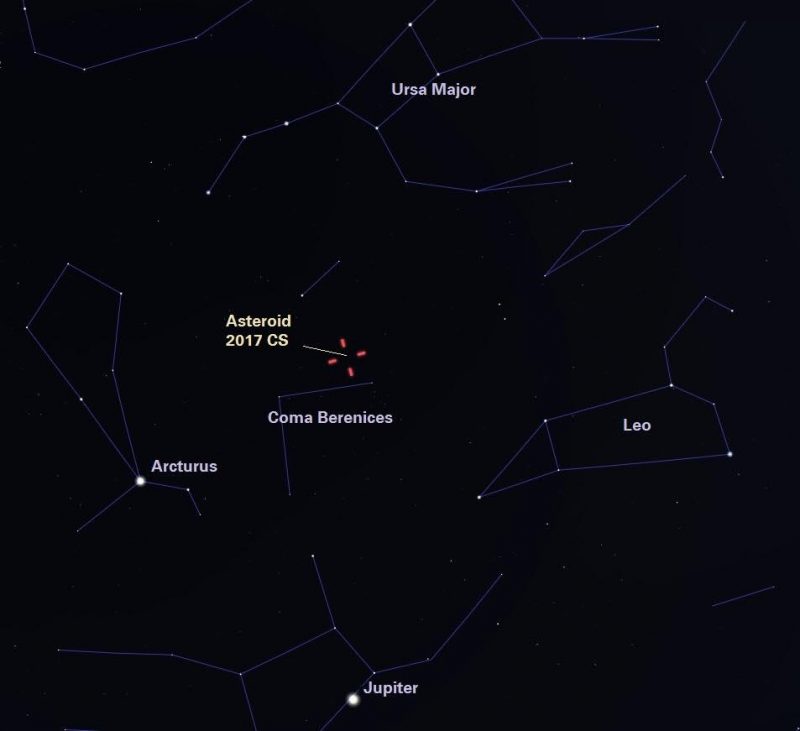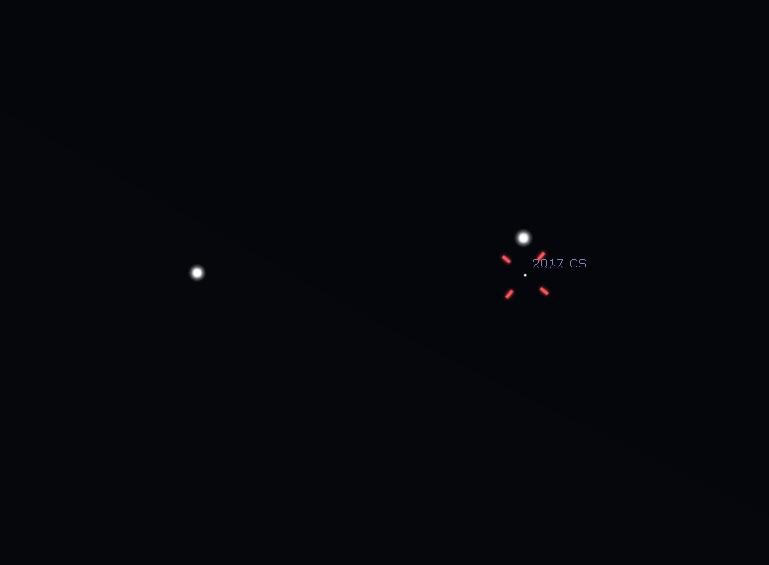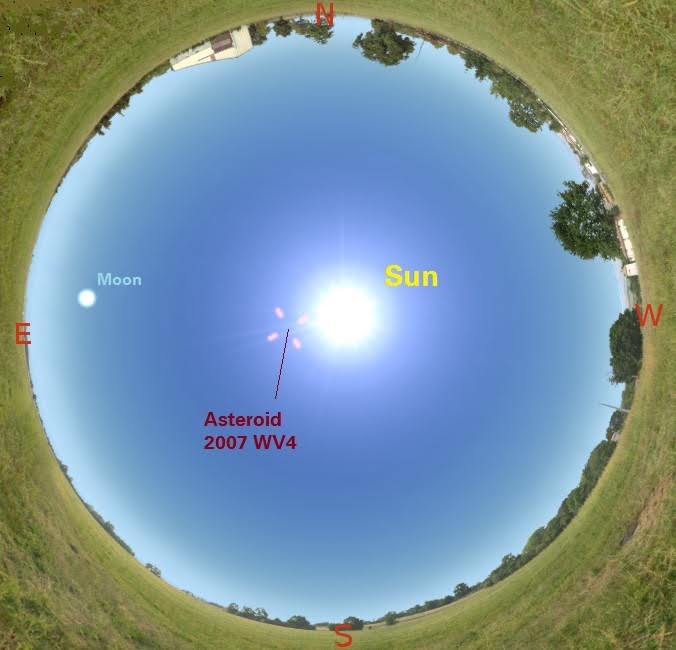
A pair of space rocks, each with a size of about a third of a mile (half a kilometer), will safely pass by Earth, the first on Monday, May 29, 2017 and the second on June 1. Although both asteroids will pass at very safe distances, they will offer good opportunities for astronomers to study these space rocks by using radar. Good news is one of the asteroids has been visible already through medium-sized telescopes, as the space rock has crossed in front of the stars. In this post, we provide charts for observers suitable for Saturday night, May 27.
Asteroid 2017 CS, which has an estimated size of about 1,535 feet (468 meters) will be closest to our planet on Monday, May 29 at 15:44 Universal Time (10:44 a.m.CDT).
Although “2017 CS” will pass at about 8 lunar distances (8 times the distance from Earth to moon) the asteroid earlier this week was showing a brightness or magnitude of 13.5, which means it is visible through 8-inch and larger-sized amateur telescopes. The asteroid, which is travelling through space at a speed of 20,430 miles per hour (32,879 km/h), will appear as a slowly moving “star.” Observers should be able to detect the space rock movement in relation to fixed stars after a minute or two of careful observations.

Lance Benner, an asteroid expert at NASA’s Jet Propulsion Laboratory, said:
The close approach and diameter indicate that this object will be an outstanding radar target with signal-to-noise ratios strong enough for imaging at 3.75-meter resolution [about 12 feet] in late May.



In an astronomical coincidence, another space rock known as asteroid 418094 (2007 WV4), will also be approaching Earth during the next few days at a distance also equivalent to 8 times the Earth-moon distance. Asteroid 2007 WV4 will be closest to Earth on June 1, 2017 at 12:09 U.T. (7:09 a.m. CDT). It’s size, at about 1,608 ft (490 meters) is also similar to the dimensions of asteroid 2017 CS.
However, these two asteroids are not related and are currently located at very different areas of the sky. In fact, while asteroid 2017 CS will be visible through amateur telescopes in the night sky, asteroid 2007 WV4, also known as “418094”, is currently hidden in the glare of daylight because it is located close to where we see the sun.
So, how will astronomers study asteroid 2007 WV4 being in the daytime sky? That’s one of the reasons that radar is a powerful tool for science. Many people may think scientists can only study these space rocks during the night. But it is fascinating to know that, as long as an asteroid’s orbit is well known, astronomers can anticipate its current position in our sky, even during daytime.
This means that by using specialized software, astronomers can point a radio telescope dish to the object’s known celestial coordinates (Right Ascension and Declination) and study the space rock even if it is not too far from the sun’s position. This allows scientists to transmit radio signals that will bounce on the asteroid, and as those bounces are received by the radio telescope, computers can produce a radar image that will show the space rock’s shape, size and rotation.
Radar observations are possible even with cloudy skies, day or night.

NASA said:
It (asteroid 2007 WV4) will be among the strongest asteroid radar targets of the year.
The 2017 encounter is the closest by this asteroid for at least
the last 400 years. Asteroid 2007 WV4 will return in June 2151 at 5.9 lunar distances. Asteroids 2017 CS and 2007 WV4 are both classified as “Potentially Hazardous Asteroids” by the Minor Planet Center.
Dr. Edgar Rivera-Valentin, a planetary scientist at Arecibo Observatory, told EarthSky that both asteroids will be analyzed using the Goldstone Radar at California, as well as from the Arecibo Observatory in Puerto Rico.
Bottom line: A pair of space rocks will pass safely by Earth in the coming days. – Asteroid 2017 CS will pass closest on Monday, May 29, 2017. Asteroid 418094 (2007 WV4) will pass closest on June 1. Both will pass at about 8 lunar distances; both are about a third of a mile (half a kilometer). Both are excellent radar targets!











